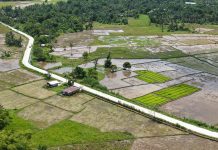With 32 Deaths
GOVERNMENT CENTER, PALO, Leyte- The Department of Health (DOH) has reported that dengue fever cases in the region has already killed 32 people and stalked 6,000 others.
This year’s dengue fever cases, covering January up to last week, are the highest for the region for the last five years, Roderick Boyd Cerro, DOH-8 chief of the epidemiology and surveillance unit.
In 2015, four people died due to the mosquito-borne disease and downed 800 others.
The latest casualties due to dengue fever were from Ormoc City, Mondragon in Northern Samar, and Guiuan in Eastern Samar.
Cerro said that the high number of dengue fever cases in the region, while very alarming, was expected.
“We were expecting a high number of dengue fever cases (which) usually arise in every three to four years and 2016 is the fourth year. There is a high possibility that those people who have not yet diagnosed in dengue will be diagnosed this time,” Cerro explained.
This week, there are 14 dengue patients still confined at the Eastern Visayas Regional Medical Center (EVRMC) in Tacloban City for treatment.
The DOH expects that the number of dengue cases will go down during summer season next year.
“For areas with many dengue cases, our advice is to conduct fogging operation to kill any adult mosquitoes. This can be done once a week for three weeks to control the mosquito population,” Cerro added.
Other strategies of the DOH to combat rising cases are intensified mosquito control efforts, coordinate with local government units in information drive, conduct fogging and larviciding in areas with clustering of cases, install dengue express lanes in hospitals, purchase and preposition of fluids.
Dengue fever is marked by an onset of sudden high fever, severe headache, pain behind the eyes, and pain in muscles and joints. Some may also have a rash and varying degree of bleeding from various parts of the body.
Cerro urged those who show the symptoms to immediately seek consultation from local health workers to prevent deaths from this mosquito-borne disease.
(SARWELL Q. MENIANO)



